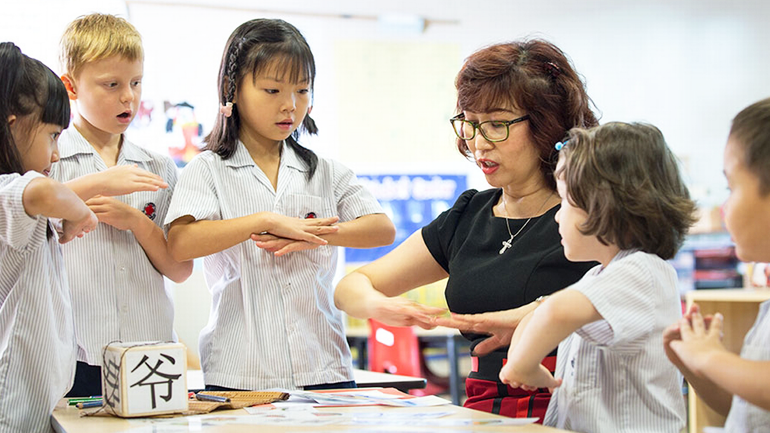
In the first part of this article, we looked at the things you need to do before you get in touch with a teacher or school. We saw that it's important to know yourself and your child in order to find a teacher or school that can provide what you need. In this second part, we're going to look at the next step: finding, contacting and evaluating teachers, courses and schools.
Making contact with a teacher and school
After you identify how you learn and set medium and long term goals, it is time to make initial calls and email a teacher or school.
Ask about the teaching philosophy and methods. Is instruction conducted with immersion, partial immersion, or English/translation techniques? What is the emphasis of the class – developing listing and speaking or reading and writing skills?
Next, set up a time to visit class and talk with a teacher in person. It is important to see a teacher and the students while a class is in session. It will give you an opportunity to see how the teacher interacts with students, what the norms of the classroom are, if the environment is welcoming and suitable to the student’s developmental level. It will also provide an opportunity to ask the teacher to outline the program goals and see how they fit with yours.
A good program and teacher should have more than a text book at the center of the program; the program should be built around objectives that are easy to explain and understand. Ask about the rationale for the objectives.
Good programs are both progressive and spiral allowing for a review of previously learned material while introducing new content. No matter what the program, there will be some rationale behind what is taught, the sequence, and the evaluation methods – even if these issues are dictated at the administrative level.
The classroom setting
The classroom will give you a good indication of the age group and developmental level best suited to the environment. Young children (preschool-elementary) will learn more effectively in an environment that provides room to move and play, carpets and child size tables and chairs rather than adult desks, visual aids and toys, inviting colors.
Junior High/Middle School and High School students are more comfortable in a traditional classroom setting with tables, chairs and desks. Adults respond well to seminar settings.
Many weekend language schools rent university facilities or classroom style rooms designed for adult learning.
The physical environment can and will dictate how the teacher engages with students. For a high school or adult student, a classroom full of desks creates a physical separation and is the most comfortable and inviting setting. For a preschool and elementary age children, the opposite is true. Young children learn by interacting with their environment.
When seeking a program for young children, look for a teacher who has experience with the age group in both personal and professional settings. Imagine taking your 2 year old to a teacher who has never taught or raised a 2 year old child. Will he or she understand the behavior and interests of a child that age? Will the teacher have a methodology that accommodates the learning styles and speed of a young toddler?
Likewise when teaching teenagers, will the teacher be able to handle typical behavioral challenges posed by teens when they are bored because a class that is too easy, overwhelmed because they don’t understand, or just disinterested?
In the next part of this article, we're going to look at specific elements of classroom teaching that matter when you select teacher or school. That includes phonetic systems, writing system, online and in-class teaching and much more.



 闽公网安备 35020302035673号
闽公网安备 35020302035673号
0 responses on "How to choose a teacher for your child to learn Chinese (2)"